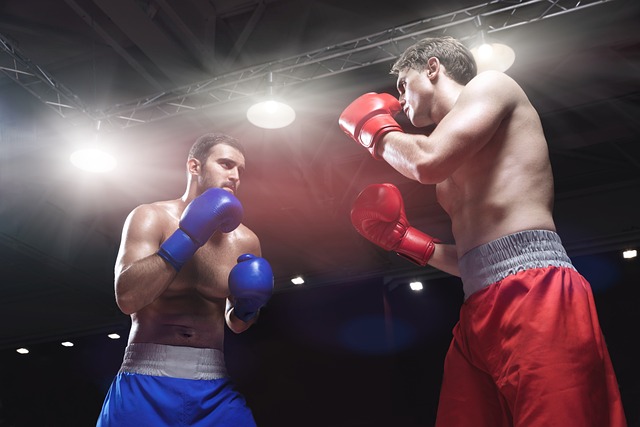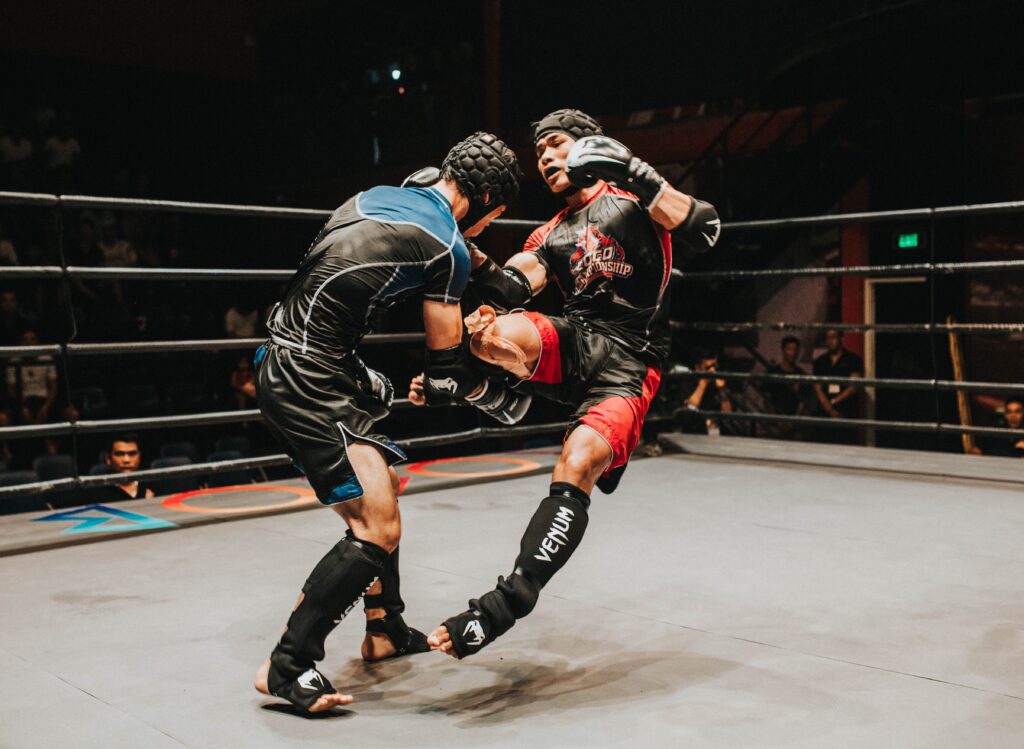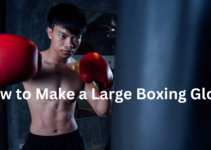When it comes to the world of boxing, the choice of gloves can be a game-changer.
Whether you’re a beginner looking to step into the ring or a seasoned professional honing your skills, understanding the crucial distinctions between amateur boxing gloves and professional boxing gloves is essential.
These seemingly similar pieces of equipment hold key differences that can impact your performance, safety, and overall boxing experience.
In this insightful blog post, we’ll unravel the nuances, helping you make an informed decision that could significantly impact your time in the ring.
So, let’s dive into the world of gloves and discover what sets the amateur and professional options apart.
Here what are the different types of boxing gloves?
About Amateur and professional boxing gloves:
Amateur and professional boxing gloves serve distinct purposes in the sport. Amateur boxing gloves typically have more padding and are designed to prioritize safety, as amateur boxers often include novices and younger fighters.

These gloves are usually larger, with extra padding around the knuckles and wrists to reduce the risk of injury.
In contrast, professional boxing gloves are smaller and offer less padding, enabling fighters to deliver more powerful and precise punches. They prioritize performance and are often customized to fit a fighter’s hand snugly.
Both types have their place in the sport, with amateur gloves emphasizing safety and professional gloves focusing on skill and power.
Difference between amateur boxing gloves and professional boxing gloves:
The counts rule
Amateurs
The key difference between amateur and professional boxing gloves lies in their design and purpose.
Amateur gloves are built with more padding and safety features to protect fighters, with larger sizes and extra padding around the knuckles and wrists.
Professionals
In contrast, professional gloves are smaller, have less padding, and are tailored for performance, allowing fighters to deliver precise and powerful punches.
These distinctions ensure safety for amateurs and enable professional fighters to maximize their skill and power in the ring.
Here what it is like a boxer after a fight?
Scoring system
Amateurs
The scoring system is a key factor that differentiates amateur and professional boxing gloves.
In amateur boxing, the emphasis is on landing clean and controlled punches, with points awarded for technique and effective hits. Therefore, amateur gloves are designed with more padding to protect both fighters.
Professionals
In contrast, professional boxing focuses more on knockout power and ring control, where fighters aim to land harder blows.

Two muscular boxers have a competition on the ring, they are wearing helmets and gloves.
Consequently, professional gloves have less padding, allowing for greater impact but also requiring more defensive skills to avoid injury.
Number of rounds
Amateurs
The number of rounds in a boxing match also distinguishes amateur and professional gloves.
Amateur bouts typically consist of fewer rounds, often three rounds for men and four rounds for women. As a result, amateur gloves have more padding to ensure fighters’ safety throughout the shorter duration of the fight.
Professionals
In contrast, professional boxing matches can go for many more rounds, so professional gloves are designed with less padding to accommodate the longer contests and emphasize knockout power and precision.
The ring size
The size of the boxing ring plays a role in the design of amateur and professional boxing gloves.
Amateur rings are generally larger than professional rings, with more space for movement.
This impacts glove design because amateur gloves are typically bulkier and feature more padding to prioritize safety within the larger ring.
In contrast, professional rings are smaller, so professional gloves have less padding to allow for more precise and powerful punches within the confined space while focusing on performance and knockout potential.
Here how much do boxing glove cushion the force of a punch?
Equipment
Amateurs
The distinction between amateur and professional boxing gloves also lies in the equipment requirements.
In amateur boxing, strict regulations govern the use of safety-focused gear, including larger and more padded gloves to prioritize fighter protection. This includes headgear for additional safety.
Professionals
In contrast, professional boxing permits smaller, less padded gloves to maximize the impact of punches, and headgear is typically not worn, emphasizing skill, precision, and knockout potential while assuming a higher level of experience and risk management among the fighters.

How to amateur and professional boxers get paid?
Amateurs
Amateur and professional boxers receive their pay in different ways. Amateur boxers typically do not receive direct monetary compensation for their fights.
Instead, they often compete for medals, trophies, or the opportunity to advance in their amateur careers. Some amateur boxers may receive stipends or sponsorship deals, but these are relatively rare.
Professional
In contrast, professional boxers earn their income primarily through fight purses and bonuses.
Promoters pay professional boxers a predetermined purse, which can vary widely based on factors like their skill level, popularity, and the significance of the bout.
Boxers may also receive a portion of the event’s ticket sales, pay-per-view revenue, or a percentage of merchandise sales.
Sponsorships and endorsements can provide additional income for both amateur and professional boxers, depending on their marketability.
Here, does boxing increase size?
What Makes Someone An Amateur Boxer?
An individual is considered an amateur boxer when they participate in boxing matches without receiving monetary compensation as their primary source of income.
Amateur boxers often compete at the grassroots or Olympic level, representing clubs, schools, or national teams.
They adhere to strict rules and regulations set by amateur boxing associations and typically wear protective gear like headgear during bouts.
The focus in amateur boxing is on skill development, competition, and sportsmanship, rather than pursuing a professional boxing career for financial gain.
What Is A Professional Boxer?
A professional boxer is an athlete who competes in boxing matches as their primary source of income.
They receive payment, known as a fight purse, for their participation in bouts, which can vary based on factors like their skill level, popularity, and the significance of the match.
Professional boxers often aspire to climb the ranks, win titles, and secure lucrative sponsorship deals.
Unlike amateur boxers, professionals do not typically wear headgear during fights, and their focus is on winning matches and advancing their careers in the sport.
Can An Amateur Boxer Beat A Pro?
While it’s rare, an amateur boxer could potentially beat a professional boxer in a match.
This could happen if the amateur possesses exceptional skill, athleticism, and preparation, while the professional boxer may be less experienced or having an off day.

However, in most cases, professional boxers have a significant advantage in terms of training, experience, and technique, making it unlikely for an amateur to consistently defeat them.
Professional boxing is a higher level of competition, but upsets can occur in any sport.
What Is The Age Limit To Enter In The Amateur Boxing Field?
The age limit to enter the amateur boxing field can vary depending on the rules and regulations set by the national or regional governing bodies.
Generally, amateur boxers can start as young as 8-10 years old in youth divisions. There is typically no upper age limit, allowing individuals of varying ages to compete.
However, safety and medical clearance considerations become more significant for older participants, and they may need to meet specific health requirements to participate in amateur boxing.
Here is a boxing glove drawing.
Do Amateur Boxers Get Paid?
Amateur boxers typically do not receive direct monetary compensation for participating in amateur boxing matches.
They often compete for medals, trophies, or the opportunity to advance in their amateur careers, with the primary focus on skill development and sportsmanship rather than financial gain.
Some amateur boxers may receive stipends or sponsorship deals, but these are relatively rare and typically provided to more elite or Olympic-level athletes.
The primary financial rewards in boxing come at the professional level, where fighters receive fight purses and a share of event revenue.
How Many Amateur Bouts Do You Need To Fight In Pro Boxing?
The number of amateur bouts a boxer needs to fight in professional boxing can vary widely.
There is no fixed requirement, as it depends on the boxer’s skills, accomplishments, and the preferences of promoters and managers.
Some boxers turn professional with relatively few amateur bouts if they show exceptional talent, while others may choose to accumulate more experience before making the transition.
Typically, amateur experience helps develop skills and can enhance a boxer’s prospects in the professional ranks, but there is no strict quota for the number of amateur bouts required.
How Do You Become A Pro Boxer?
To become a professional boxer, one typically follows these steps:
- Training and Amateur Career: Start training in boxing at a young age, join a reputable boxing gym, and participate in amateur boxing matches to gain experience.
- Get a Manager/Trainer: Find a manager or trainer who can guide your career and help you make the transition to the professional level.
- Apply for a Professional License: Apply for a professional boxing license from the relevant boxing commission or governing body in your region.
- Secure Fights: Your manager will work on securing professional fights for you, and you’ll begin your pro career.
- Build a Record: Win fights, build a strong record, and aim for higher-profile bouts and titles to advance in your professional career.
- Promotion and Sponsorship: Seek promotion and sponsorship deals to enhance your visibility and income.
- Continuous Training and Improvement: Keep training, improving your skills, and striving to achieve your career goals in professional boxing.
Why Are Pro Boxers Not Allowed To Compete At The Olympics?
Professional boxers are not allowed to compete at the Olympics due to rules set by the International Boxing Association (AIBA) and the International Olympic Committee (IOC).
The decision was made to maintain a clear distinction between amateur and professional boxing.
The Olympics have traditionally been a platform for amateur athletes, while professional boxers often have significant experience, higher levels of competition, and financial incentives.
This rule ensures a level playing field for amateur boxers and preserves the Olympic spirit of fair competition among non-professionals
Are Olympic Boxers Better Than Professional Boxers?
It’s not accurate to say that Olympic boxers are universally better than professional boxers or vice versa. They excel in different domains due to distinct focuses and rules.
Olympic boxers prioritize amateur-style scoring and point-based victories, emphasizing technique and speed. Professional boxers often emphasize power and knockouts.
Both groups exhibit exceptional skills, but their strengths differ.
Some Olympic boxers transition to successful professional careers, while others may struggle to adapt to the professional format, highlighting the differences between the two realms.
Why Do Some Amateur Boxers Not Go Pro?
Several factors influence why some amateur boxers choose not to go pro.
These may include personal preferences, the desire to maintain amateur status for eligibility in other competitions (e.g., Olympics), concerns about the physical toll of professional boxing, or a lack of financial opportunities.
Some amateur boxers may also not meet the criteria for a successful transition to the professional ranks, such as having a strong record or attracting the interest of promoters and managers.
Conclusion
In conclusion, understanding the disparity between amateur and professional boxing gloves is vital for any aspiring pugilist.
The key contrasts lie in padding, weight, and regulations.
Now, here’s a thought-provoking question for you: Which type of boxing gloves do you think would be more suitable for your training goals, and why? Share your thoughts below!





